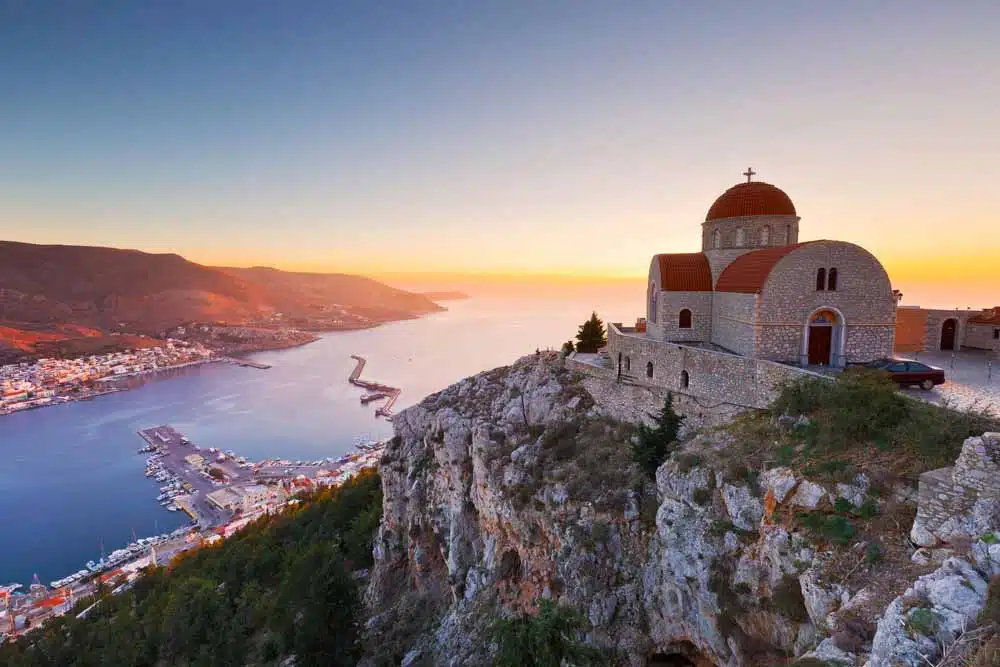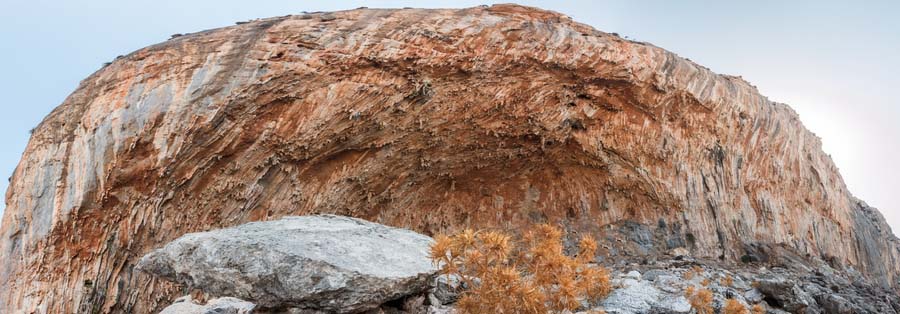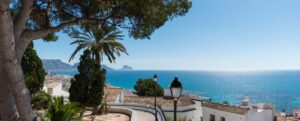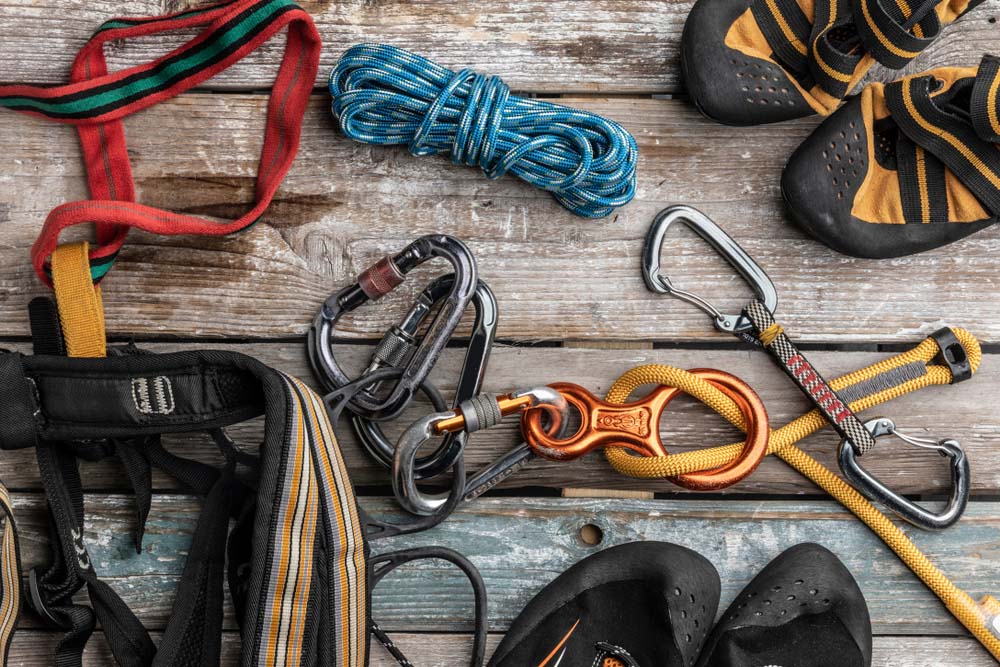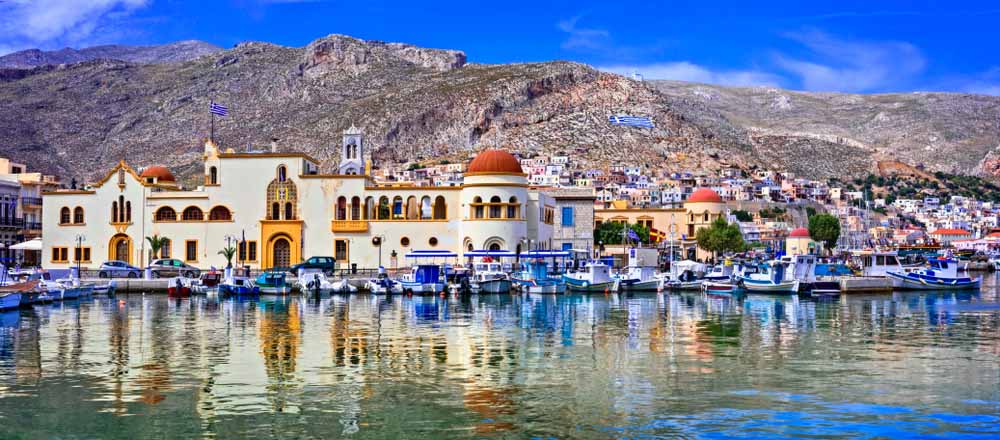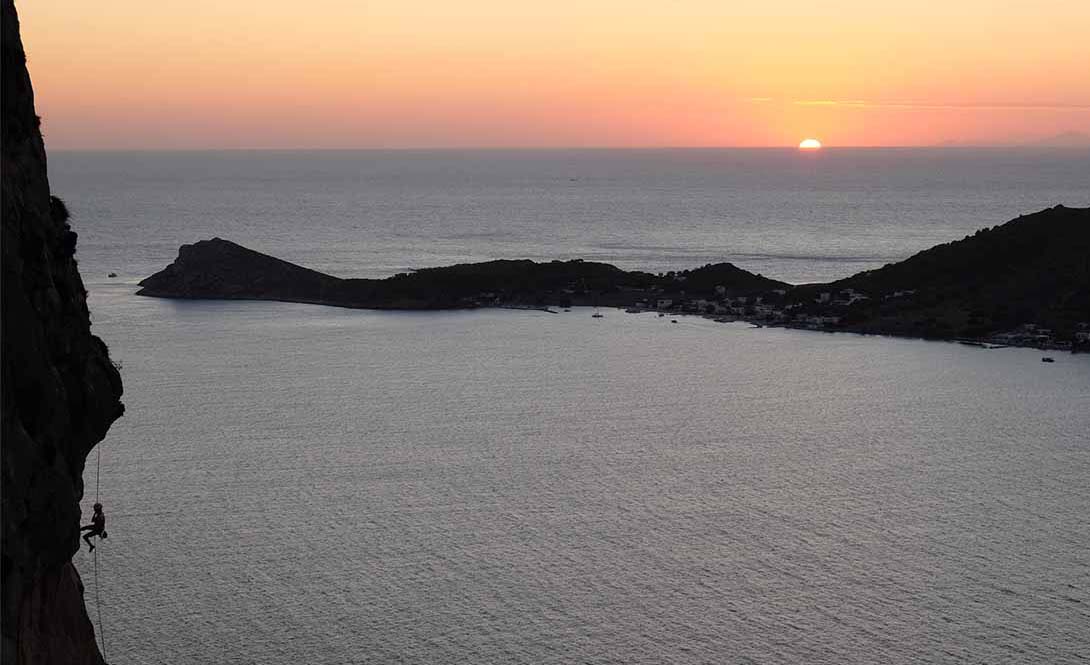If you are a rock climber, then chances are you’ve seen photographs or videos of the iconic landscapes and climbing that are found on the Greek island of Kalymnos. The famous limestone walls of orange and white rock, littered with interesting three-dimensional features like tufas and stalactites and the Aegean Sea in the background, are precisely why Kalymnos begs to visit every passionate rock climber.
But the photos of climbing in Kalymnos don’t do it justice. You have to visit for yourself to experience Kalymnos’ full potential.
If climbing in Kalymnos is on your bucket list, keep reading. Below you will find tons of helpful information to get you started with planning a rock trip of a lifetime.
Cultural History of Kalymnos
The island of Kalymnos is a 42-square-mile Greek island. It’s part of the Dodecanese island complex in the southwestern Aegean Sea. For years Kalymnos was known as the “sponge diver’s” island. That’s because, in ancient times, harvesting sea sponges, also known as “Kalymnian gold,” served as the chief enterprise for local families.
That was until the 1980s when a catastrophic disease hit the sea sponge population. Now the sought-after sponges are scarce. However, the sea sponge industry still flourishes in Kalymnos because now sponges from elsewhere are processed on the island because of the Kalymniam people’s expertise.
However, nowadays, Kalymnos is much more well-known for its rock climbing.
How It All Started
The climbing potential on Kalymons was first observed in 1995 by one of the best Greek climbers of the time, Giannis Torelli. He didn’t go climbing, but he did photograph the various cliffs that could be good for climbing.
Then, in 1996, an Italian climber by the name of Andrea di Bari visited the island. He also observed the amazing potential of the Kalymnian rock but like Torelli, did not establish any climbs. Instead, di Bari returned one year later, in 1997, with friends to equip the first climbing routes on Kalymnos. In total, they established 43 sport routes.
Then, later that year, di Bari returned with Andrea Gallo, a photographer working for Alp Magazine. Two years later, in the spring of 1999, photographs and articles of the world-class climbing on Kalymnos circulated throughout print magazines in Europe, like Rotpunkt. From then on, rock climbing took the island by storm, developing into the world-class climbing destination it is today.
Geological History of Kalymnos
The island of Kalymnos is characteristically rocky and arid. It possesses many unique geological and geomorphological oddities, contributing to its interesting geological history. In particular, the island has many caves, ravines, and mountains consisting of sedimentary limestone rock. In total, there are 50 subterranean caves, many of which were once associated with religious worship during the Byzantine Empire.
Kalymnos has three parallel mountain ranges that rise from the sea, all of which are oriented west-northwest to east-southeast. The various mountain ranges boast impressive limestone hillsides and impressive caves, all of which have put Kalymons on the maps as one of the best climbing destinations in the world.
How To Get To Kalymnos
Due to its location in the Aegean Sea, getting to Kalymnos can be a little tricky. Fortunately, there are multiple ways to get to Kalymnos you can choose from depending on how you like to travel and your budget.
The best ways to get to Kalymnos include:
- Flying to Kos and then taking a ferry from Kos to Kalymnos.
- Flying to Athens and then flying directly to Kalymnos.
- Flying to Athens and then taking a ferry from the Piraeus Port to Kalymnos.
- Flying to Rhodes and then taking a ferry from Rhodes to Kalymnos.
The vast majority of climbers select the first option– flying to the island of Kos and then taking a ferry from Kos to Kalymnos. That’s because all major European airports service flights to Kos between April and October, so finding an affordable flight is easy.
The ferry from Kos to Kalymnos is also very affordable. Plus, the island of Kos is only 30 to 40 minutes away from Kalymnos by ferry. The only fallback of this option is that occasionally severe winds can halt sea travel from Kos to Kalymnos, but that is usually very rare.
Kalymnos Climbing Season
The dry climate on Kalymnos makes climbing there possible year-round. But some seasons are better than others.
The best time of the year to visit Kalymnos is during the Fall (September-November). You will get mild weather and good temperatures. Plus, it doesn’t typically rain in September or October. During most years, October is the peak month.
Spring (March-May) is also good for climbing. The sea is colder and the chance of rain is higher, but Kalymnos rock dries super fast.
It is possible to climb during the summer months. However, the weather is much hotter, which can be a detriment to climbing. So if you go in the summer, climbing in the shade is necessary. In addition, during the summer, Kalymnos becomes a hot spot for Greek vacationers from the mainland who want a taste of island life.
Like the summer, climbing during the winter months (December-February) is possible, but it is not recommended. The island gets a lot of precipitation during the winter, which can ruin a climbing trip. In addition, the island practically shuts down during the winter, as many local Kalymnians close their business and leave the island.
The Climbing on Kalymnos
The rock on Kalymnos is limestone of the highest quality. There is fantastic variety– everything from slabs, delicate walls, puppy routes with pockets, tufas, stalactites, and huge overhanging roofs.
The climbing in Kalymnos is characterized by three varieties:
- Extremely overhanging terrain with tufas, stalactites, and blobs
- Slightly overhanging and vertical walls with white and orange rock, filled with pockets and smaller tufas
- Less than vertical slab walls with sharp grey rock, pockets, and iron knobs
About one-half of the routes are graded up to 6b+. More than one-third of the routes are between 6a and 6b+. Therefore, Kalymnos is ideal for beginner climbers.
But there are also more than 700 routes graded from 7b and up. The hardest grade confirmed on Kalymnos is 9a. So, there is plenty to do for the super experienced climbers also.
Recommended Equipment for Climbing on Kalymnos
Because climbing on Kalymnos is all bolted sport climbing, packing rock climbing equipment is relatively straightforward.
- Helmet: if you are climbing outside, you should be climbing with a helmet on.
- Harness: this is a no-brainer. But don’t pack your bulkiest big wall harness. The simpler and lighter your harness can be, the better.
- Climbing Shoes: Kalymnos is known for its steep and overhung terrain. So many climbers pack their most aggressively downturned shoes. However, there is also lower-angle rock, so you may want a pair of climbing shoes that perform well in slab-like terrain also
- Quickdraws: the routes on Kalymnos are long– therefore, you should bring upwards of 20 quickdraws. It’s also recommended to pack a couple of longer draws or slings to mitigate rope drag on longer routes. Also, many of the steepest routes have perma-draws.
- Climbing Rope: unlike many sport climbing destinations, a 60-meter rope will only allow you access to some of the routes on Kalymnos. You are better off with a 70-meter rope if you want to climb some of the longest routes.
- Kneebar Pads: climbing on Kalymnos is kneebar heaven, especially if you are climbing 5.11 or harder, so pack a kneebar pad or two to take advantage of the numerous kneebar rests.
A Note of Caution
Unfortunately, many accidents have occurred from climbing routes without a long enough rope. It’s essential to have the right rope. It’s also critical to close your rope system by tying a knot at the end of the rope, regardless of the length of rope you are using.
Many of the locals climb with a 70-meter rope. However, there are some routes that require a 80-meter rope to climb safely. A 60-meter rope can get you by on the shorter routes, but it’s not recommended.
In terms of quickdraws, at a minimum, it’s best to bring at least 15 quickdraws.
- Routes between 20 and 25 meters may require 10-12 quickdraws
- Routes from 25 to 35 meters may require 15 quickdraws
- Routes from 35 to 40 meters may require 20 quickdraws
These are just recommendations– you should always consult the guidebook for the exact number of quickdraws before leaving the ground. In addition, it never hurts to bring more quickdraws so you can leave some hanging on your project and still have enough to try other routes.
Crag Etiquette on Kalymnos
The golden rule for climbing in Kalymnos is– to leave no trace. In other words, when you visit Kalymnos, treat the island like your home, and treat other climbers the way you would want to be treated.
Besides the golden rule, here are some other rules to follow regarding crag etiquette.
- Pack out your trash: bring a bag with you to store all your trash. Leftover food, wrappers, and other trash should not be left at the crag.
- Close the gates behind you: much of the land around the climbing cliffs is used by local shepherds who rely on fences and gates to control their animals.
- Don’t feed the goats: never feed the goats, and always keep your backpacks zipped and shut at all times.
- Stay on the trail: always use the designated trails from the guidebook. Going off trail can cause problems with landowners and shepherds and destroy vegetation.
- Help clean the routes: over the Spring, vegetation can grow on the routes, especially less frequented routes. The vegetation can conceal holds and loose rocks. So bring a pair of gloves and help clean the routes whenever necessary.
Kalymnos Climbing Guidebook
The unrivaled source of information for climbing in Kalymnos is the local guidebook, Kalymnos: Climbing Guidebook.
Print editions are available for sale on the island. However, you can also purchase a digital version online.
Portions of the proceeds from guidebook sales are invested back into the Kalymnian climbing community for maintenance and new routing.
Rest Day Activities While Visiting Kalymnos
Believe it or not, a trip to Kalymnos doesn’t have to be all about rock climbing. There are plenty of other activities you can do to enjoy the island. Here are some ideas.
- Explore the amazing caves of Kalymnos, like Daskalio Cave, Skalia Cave, Cave of the Seven Virgins, and Kefala Cave.
- Rent a scooter and explore.
- Swim in the Aegean Sea and enjoy the sandy beaches.
- Check out the city of Pothia for museums, good food, and shopping.
- Go snorkeling along the rocky coastlines.
- Go for a hike on any of the amazing hiking trails embroidering the island.
- Take a day trip to nearby islands like Telendos, Leros, Kos, and Pserimos.
Kalymnos Climbing For Beginners
Contrary to what many photos of Kalyminan rock climbing depict, the climbing on Kalymnos does not only include steep cave climbing for expert climbers. There is plenty of terrain on the island of Kalymnos to accommodate the beginner climber.
Kalymnos has a ton of beginner terrain, with hundreds of routes ranging from 5.4 to 5.9. Even better, many of the crags have diverse terrain types and difficulties, making it easy for a group of climbers with different abilities to enjoy the same crag.
In reality, climbing on Kalymnos is super friendly to beginners. The cliffs are close to town, so the approaches are not too long. The climbs are safely bolted, ideal for learning to lead climb. And the climbing community is super knowledgeable and close-knit, perfect for making friends and learning from more experienced climbers.
Final Thoughts – If you are a climber, Kalymnos needs to be on your bucket list
Rock climbing in Kalymnos is a one-of-a-kind experience. For many rock climbers, enjoying the limestone climbing and beautiful beaches on Kalymnos is a major bucket list item.
Regardless of what type of climber you are, beginner or experienced, if you love clipping bolts in iconic landscapes and diving into one of the most interesting climbing communities in the world, Kalymnos is where you need to visit next.
If you’ve been inspired to visit the island of Kalymnos, we hope you found this guide helpful. For more helpful information, visit the Climb Kalymnos website.


